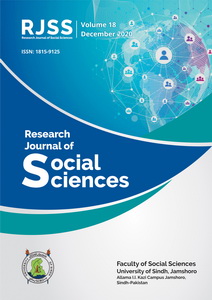US-CHINA STRATEGIC ENGAGEMENTS IN SOUTH ASIA A REGIONAL PERSPECTIVE
Main Article Content
Abstract
This paper addresses the ongoing strategic competition between the USA and China in South Asia (SA). SA has always been considered one of the essential geo-strategic, geopolitical, and geo-economic regions for significant powers. US-China strategic competition in SA emerged after the Cold War era. The US found a new “strategic ally” in the SA region, India, to curtail China’s role in the area and beyond. The US accommodated India in various matters such as armed forces development, Basic Exchange and Cooperation Agreement (BECA) agreement, Quadrilateral Security Dialogue (QUAD), global economic cooperation, access to the nuclear market, supporting India in the UNSC, etc. Pakistan sees this US-India relationship with its prism, and China has its global aspirations. China offers similar, although limited, support to Pakistan to counter the Indian hegemony.
Furthermore, China’s economic plan BRI engages all the South Asian states except India and Bhutan. This economic engagement offers more room for China’s global policies. Strategic competition between the US and China has also impacted the regional and domestic issues of South Asian states. Meanwhile, the US-NATO’s withdrawal from Afghanistan has also created several challenges for both states. This research highlights significant regional power policies during the last three decades and who has gained more weight in the SA region.
